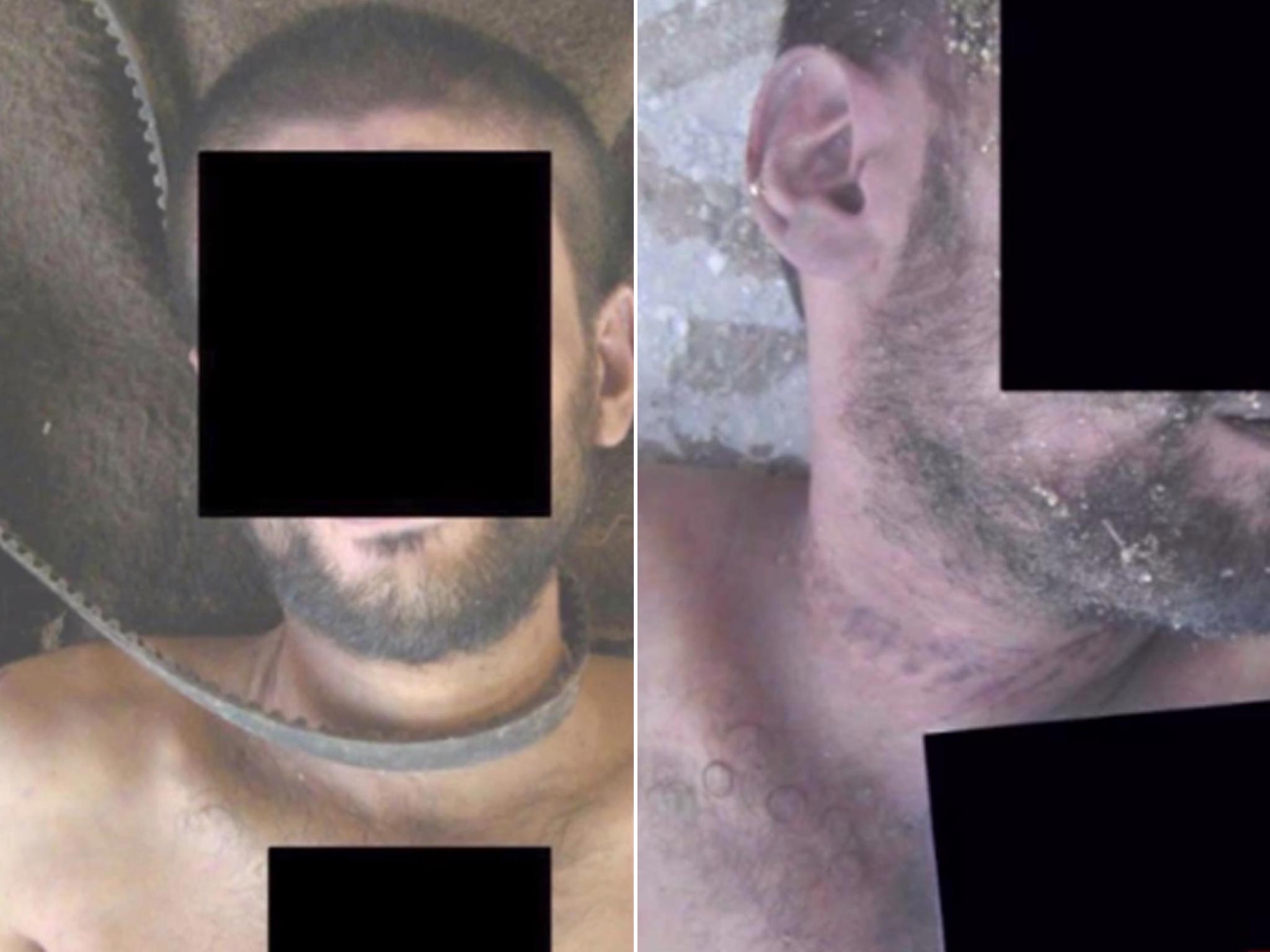Torture in Syria: Photos may be proof of 'industrial-scale killing' carried out by Assad regime
Images leaked by defector whose job was to 'take pictures of killed detainees'

Your support helps us to tell the story
From reproductive rights to climate change to Big Tech, The Independent is on the ground when the story is developing. Whether it's investigating the financials of Elon Musk's pro-Trump PAC or producing our latest documentary, 'The A Word', which shines a light on the American women fighting for reproductive rights, we know how important it is to parse out the facts from the messaging.
At such a critical moment in US history, we need reporters on the ground. Your donation allows us to keep sending journalists to speak to both sides of the story.
The Independent is trusted by Americans across the entire political spectrum. And unlike many other quality news outlets, we choose not to lock Americans out of our reporting and analysis with paywalls. We believe quality journalism should be available to everyone, paid for by those who can afford it.
Your support makes all the difference.Lawyers acting for the Arab state of Qatar claim to have evidence smuggled out of Syria that shows the “systemic killing” of about 11,000 Syrian detainees at the hands of Bashar al-Assad’s regime.
The allegations, contained in a 31-page report released yesterday to coincide with the Geneva II talks, were described as a “smoking gun” that could see Syrian officials charged with war crimes. It comes just 24 hours after President Assad insisted he had no intention of quitting and the issue was not up for discussion in Geneva.
The US network CNN and The Guardian newspaper claims the evidence came from a military policeman known only as “Caesar” who worked secretly with a Syrian opposition group and later defected and fled the country. It contains graphic images of victims, many of whom appear emaciated, blood-stained and subject to torture.
While the United Nations has documented abuses by both Mr Assad’s forces and the rebels, the new evidence is thought to be more detailed than anything yet to emerge from the 34-month crisis. It is being made available to the UN, governments and human rights groups.
Warning: Graphic content
The below gallery contains very graphic images released by the authors of the report. We have taken the decision to publish these pictures to inform our readers of the alleged abuses being carried out in Syria
The report’s authors are London-based Sir Desmond de Silva, QC, the former chief prosecutor of the special court for Sierra Leone, Sir Geoffrey Nice, QC, the former lead prosecutor of former Yugoslav President Slobodan Milosevic, and Professor David Crane, who indicted President Charles Taylor of Liberia at the Sierra Leone court.
Mr De Silva told The Guardian that the evidence “documented industrial-scale killing”. He said: “This is a smoking gun of a kind we didn't have before. It makes a very strong case indeed.”
The trio, whose work was commissioned by a London legal firm acting for Qatar, interviewed Caesar in three sessions over three days and said his account was “most compelling”. The defector told investigators his job was “taking pictures of killed detainees” but did not claim to have witnessed executions or torture.
Warning: Video contains graphic images
“The procedure was that when detainees were killed at their places of detention, their bodies would be taken to a military hospital to which he would be sent with a doctor and a member of the judiciary, Caesar’s function being to photograph the corpses … There could be as many as 50 bodies a day to photograph which require 15 to 30 minutes of work per corpse,” the report says.
“The reason for photographing executed persons was twofold. First to permit a death certificate to be produced without families requiring to see the body, thereby avoiding the authorities having to give a truthful account of their deaths; second to confirm that orders to execute individuals had been carried out.”
Families were told that the cause of death was either a “heart attack” or “breathing problems”, the report adds.
Join our commenting forum
Join thought-provoking conversations, follow other Independent readers and see their replies
Comments